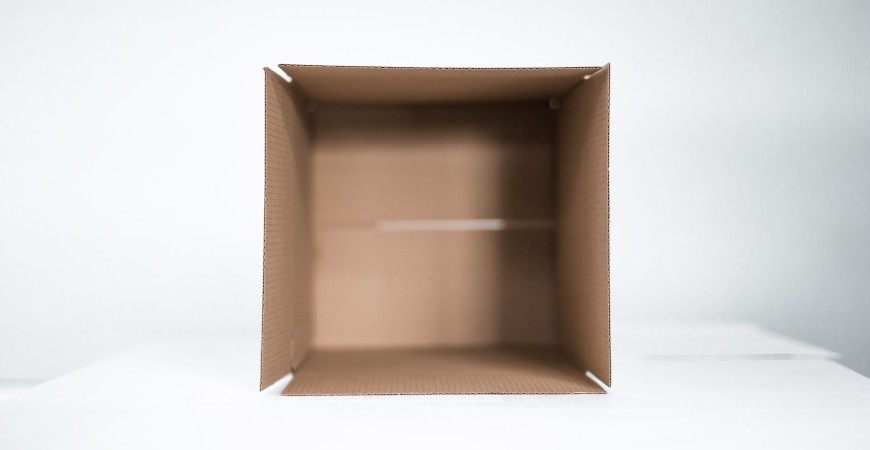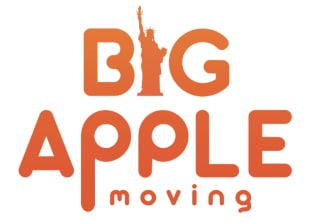Moving can be a real pain, but if you plan ahead and have the right stuff, it’s totally doable. One of the most important things to get right is picking the right size boxes. You want to make sure your stuff stays safe during the move and that packing and unpacking is a breeze.
In this guide, we’ll go over what to think about when choosing boxes and give you some tips on what size to use for different things. Whether you’re moving far away or just a few blocks over, this post will help you make smart choices about your boxes.
Choosing the Right Size Moving Box

Picking the perfect moving box size ain’t a one-size-fits-all deal. You gotta find boxes that fit your stuff without wasting space. For heavy things like books or kitchen gear, grab smaller boxes so you don’t break your back. For lighter stuff like bedding, go big. You wanna pack smart and keep your stuff safe.
Take Inventory
Before you start packing or use a packing service, take a detailed inventory of all the items you plan to move. Categorize them into groups based on their size, weight, and fragility. This will give you a better idea of how many boxes you need and what sizes are required.
Use Small Boxes for Heavy Items
Items like books, canned goods, and small appliances can become exceptionally heavy when packed together. To prevent back strain and ensure the safety of your belongings, use small boxes for these heavier items. Look for book boxes or small-sized moving boxes designed to handle substantial weight.
Choosing small boxes for heavy items is essential for maintaining the integrity of your belongings during the move. Heavy items, when packed together in larger boxes, can not only make the box difficult to lift but may also lead to box failure during transit. Opting for sturdy small boxes specifically designed for heavy items distributes the weight more evenly and reduces the risk of damage to your possessions.
Medium Boxes for Most Items

If you’re moving and need to pack up your stuff, go for the medium-sized boxes. They’re perfect for things like kitchen stuff, toys, and non-breakable personal items. These boxes are just the right size to hold a good amount of stuff without getting too heavy. Plus, they’re easy to label and organize, so you won’t have to dig through a bunch of boxes to find what you need when you get to your new place. Trust me, it’s the way to go.
Use Large Boxes for Light Bulky Items
When packing lightweight yet bulky items such as bedding, pillows, and stuffed animals, it is advisable to use larger boxes. These boxes enable you to consolidate such items, thereby reducing the number of boxes required. Large boxes are particularly suitable for packing items that are light but bulky and may not fit comfortably in smaller boxes.
By utilizing larger boxes, you can optimize the available space while minimizing the overall number of boxes needed for your move. This approach not only streamlines the packing process but also simplifies the loading and unloading of your belongings.
Consider Specialized Boxes for Fragile Items
During a move, it is imperative to provide additional protection for fragile items such as dishes, glassware, and electronics. To ensure the safety of these delicate items, it is recommended to invest in specialized boxes, such as dish packs or cell kits, which are specifically designed with dividers and extra cushioning. These specialized boxes are tailored to meet the unique needs of fragile items, and prioritize their safety during transit.
Dish packs, for instance, are equipped with dividers and foam inserts that prevent fragile dishes from colliding with each other. Similarly, cell kits offer individual compartments for glassware and delicate electronics, providing optimal protection throughout the move.
Avoid Overfilling Boxes
As you prepare for your big move, it’s natural to want to make the most of every inch of space. However, resist the urge to cram your boxes to the brim until they’re bulging and difficult to close. Not only can overfilled boxes burst open during transit, but they can also put undue strain on the movers who are handling them.
Instead, take a mindful approach to packing. Properly filled boxes maintain their structural integrity, making them easier to stack and transport. Keep in mind weight limits and don’t be afraid to use an additional box if necessary. After all, it’s better to err on the side of caution than to risk damage to your precious belongings.
Different Types of Moving Boxes

When it comes to residential moving (or any other type of moving), having the right boxes is essential for ensuring the safe and efficient transportation of your belongings. While standard cardboard boxes are commonly used, there are various specialized moving boxes designed to cater to specific items and provide added protection. Understanding the different types of moving boxes available can help you make informed choices based on your packing needs.
- Standard Cardboard Boxes: These boxes are the most versatile and widely used moving boxes. They come in various sizes, from small to extra-large, making them suitable for packing a wide range of items. These boxes are typically durable, affordable, and readily available at hardware stores, home improvement centers, and moving supply retailers. Use standard cardboard boxes for everyday items, such as clothes, books, kitchenware, and other non-fragile belongings.
- Wardrobe Boxes: Those are specially designed to accommodate hanging clothes. They come with a built-in metal hanging bar, allowing you to transfer your clothes directly from the closet to the box, keeping them wrinkle-free during the move. Wardrobe boxes are ideal for transporting dresses, suits, and other hanging garments without the need for folding or packing.
- Dish Packs: Dish packs are designed to protect fragile dishes, glassware, and other breakables during transit. These boxes are reinforced with extra padding and dividers to prevent items from knocking against each other. Dish packs provide a secure solution for transporting delicate kitchen items, ensuring they arrive at your new home in one piece.
How To Save On Moving Boxes
Relocating can prove to be a costly undertaking, with the procurement of moving boxes being one of the expenses that can rapidly accumulate. Nevertheless, there exist various means through which one can economize on moving boxes without jeopardizing the security of their possessions. By engaging in some forethought and ingenuity, it is possible to curtail moving costs and maintain fiscal prudence.
- Ask Friends and Family: Reach out to friends, family, and neighbors who have recently moved and inquire if they have any spare moving boxes they no longer need. Many people are willing to give away their used boxes to help others with their move.
- Online Marketplaces and Community Groups: Browse online marketplaces or join local community groups on social media platforms. Many people offer free moving boxes after completing their moves, and these platforms can be a great resource for finding reusable boxes.
- Talk to Moving Companies: If you’re hiring a moving company, inquire whether they offer box rental or recycling programs. Some moving companies may provide discounted or free boxes as part of their services.
- Use Household Items as Boxes: Use household items as boxes. Suitcases, laundry baskets, and storage bins can be used to pack clothes, linens, and other items.
- Minimize the Number of Boxes Needed: The implementation of efficient packing techniques can yield a substantial reduction in the quantity of boxes required for a given task. One may utilize blankets, towels, and clothing as protective coverings for delicate items, thereby mitigating the necessity for supplementary packing materials and boxes.
Conclusion
To save money on moving boxes during relocation, use these tips. They will help you spend less on boxes and make your move easier. Plan ahead, be creative, and ask for help from your community. These things will make your move cheaper and smoother. Remember these tips so you can enjoy your new life without spending too much money.
